
Taking inspiration from traditional golu displays from Navarathri celebrations, multidisciplinary California-based Tamilian-American artist Shreya360 began a practice last year of creating a “Virtual Golu” of art for each night of the festival. Her digital illustrations were shared online and featured in Kajal Mag. Following this year’s Navarathri festival earlier this month, she shares with The Aerogram her latest “Virtual Golu.” View the illustrations created by Shreya360 at 360.jpg and throughout this post, including Offerings shared exclusively with The Aerogram. Read her interview for her thoughts on the challenges of making art on limited time, her memories of Navarathri and Dussehra celebrations past, creativity and discipline, tradition, and the divine.
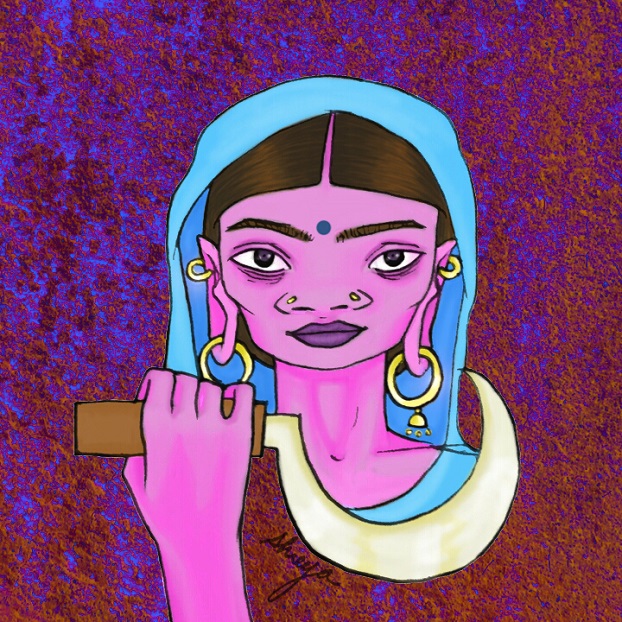
How did you get started in your journey as a creative artist?
Creativity has always been an important avenue for self-care and healing for me. I went through some dark times when I was younger (as we all have), and my creative practice always saw me through those times unscathed. I’ve always had a strong creative impulse, but I have had to learn not to be limited by medium. Growing up I used to do a lot of creative writing — short stories, poetry, fantasy worlds. At some point writing stopped nourishing me. The creative impulse itself, however, is indelible and has bubbled up in the form of visuals over the last few years.
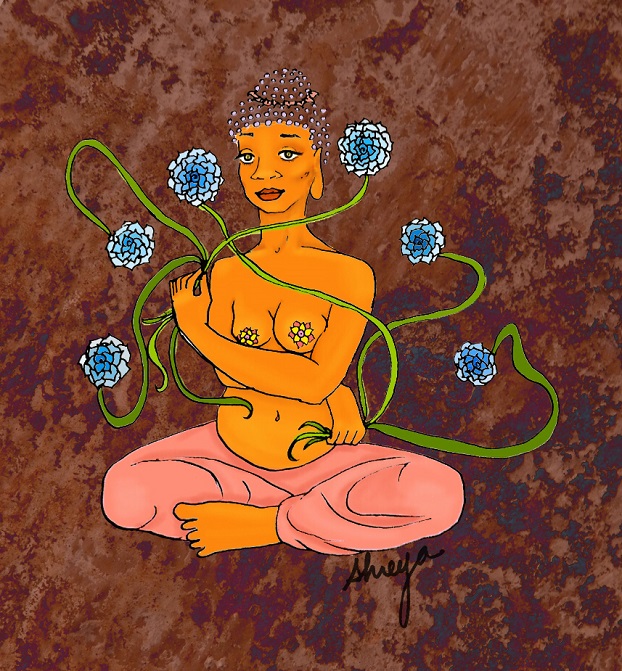
My mother and grandmother are also prolific creatives. They’ve both produced a pantheon of Tanjore paintings, which I’m so grateful for. Watching my grandma work on these, seeing her do Nirmal paintings when we lived in Hyderabad, learning about Warli and Madhubani prints from my mum, and more, have been crucial to my development. I’m hella grateful to have grown up immersed in this world. It’s such an enormous blessing. From music to literature to regional art, the knowledge and support of women who walked before me guides my practice today.
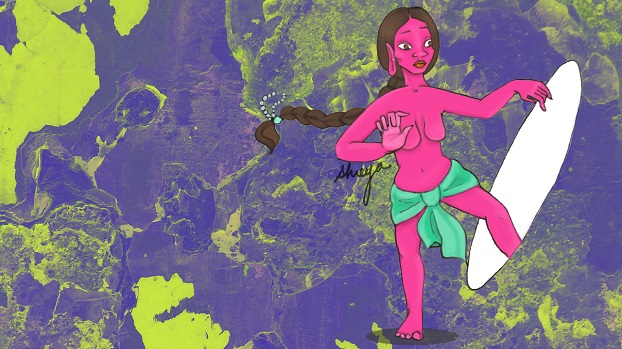
How long did it usually take you to make the nightly illustrations for your “Virtual Golu”?
Ah, time was a big challenge for me this year. When I started this practice back in 2015 I had a lot more time to create and often did more than one piece in a night. At that time my experience was all about solitude — going inward, forging a personal dialogue with the Divine, creating as a form of meditation. There was a lot of stillness.
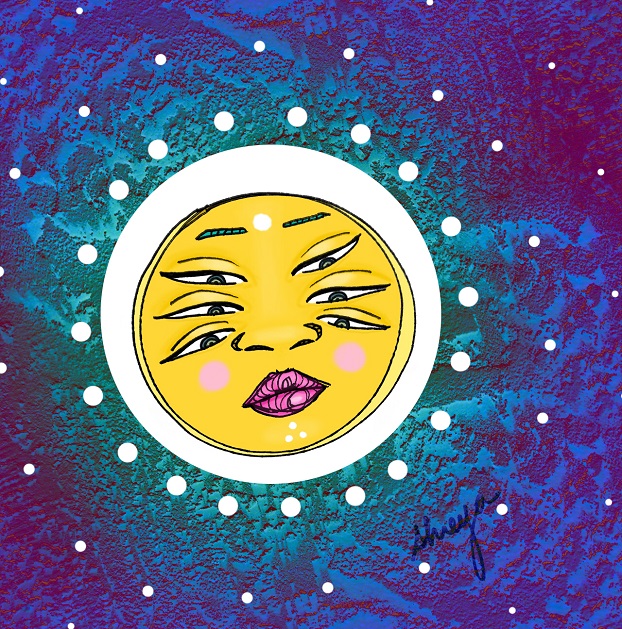
This is my second year holding a Virtual Golu by creating art as Offerings to the Goddess. This year, I have a lot more on my plate. By the end of my work day I usually have hardly two hours to myself, to dedicate to this practice. So the short answer is: Each night’s Offering this year took me about two hours. I’ve learned different lessons engaging with this practice for the last two years, and a major theme this time around was discipline. If you make a promise to yourself, to the Goddess, you gotta see that through. That’s a life lesson.
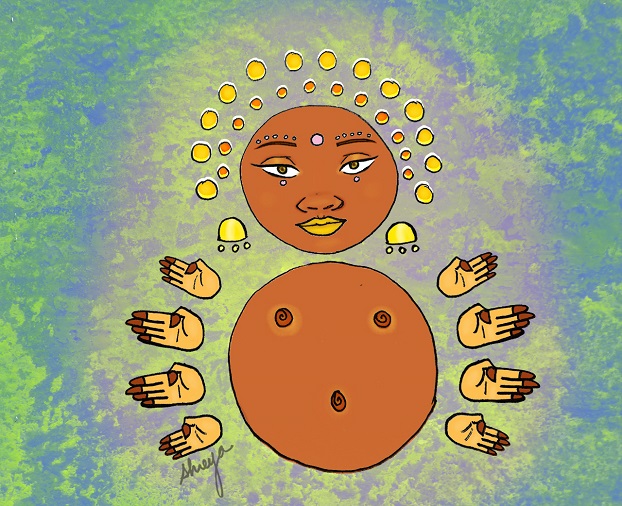
Did you plan in advance of Navarathri on any themes or topics for this year’s creative offerings? Or did you start with a fresh slate, so to speak, each day as you created?
This year I definitely started with a clean slate every time. Each night honors a different avatar of Shakti, so each night comes with a theme if you want it — like Night 4, dedicated to the primordial Goddess Kushmanda. But this year I wanted to focus more on being present and mindful of what I was feeling, rather than building content around a prescribed theme. I think the Offerings ended up being more personal that way.
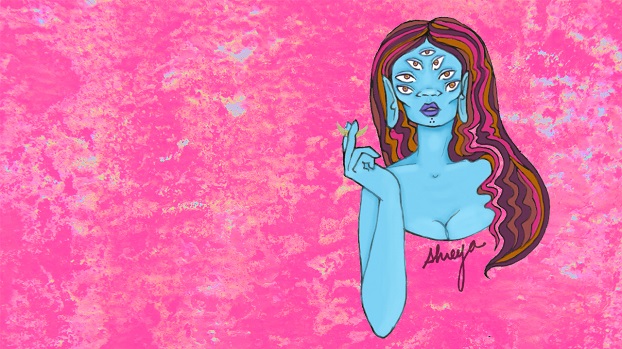
The first time I did this, I did make a more concerted effort to relate the Offering back to the avatar of the evening. There’s no right or wrong way to go about this, and at that time having a clear avatar or theme gave me a great starting point in thinking about the lessons She had to teach me.
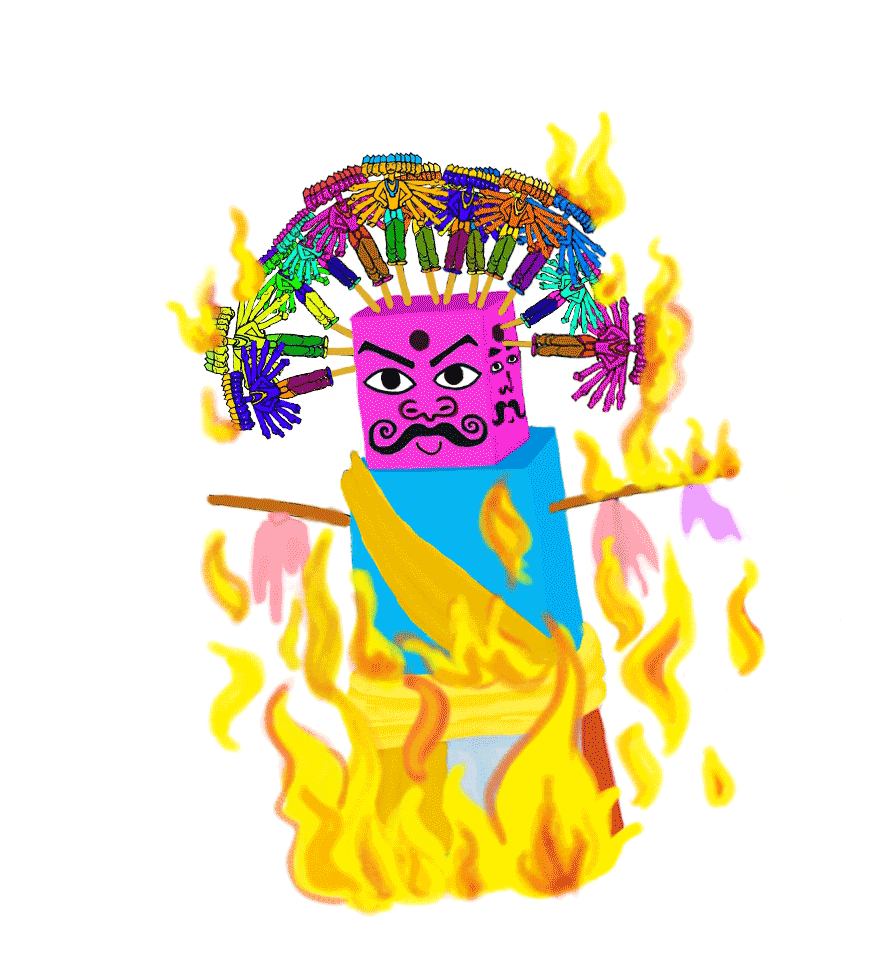
Did you grow up observing Navarathri? and Dussehra? If so, what are some of your memories from those past celebrations?
Navarathri, definitely! I remember going to aunties’ houses for Golus, doing Saraswati Puja every year, going to temple for Vijaydashmi, and more. I’ve always loved the cheer, the light of it all. I’ve always loved drinking in the visuals of the Golu, of the ladies all dressed up. The thing is… I am a bit of an introvert, and to be honest attending Golus always gave me some anxiety! So for me, the Virtual Golu is the perfect solution. I can commune with kindred spirits and be openly intimate without feeling put on the spot.
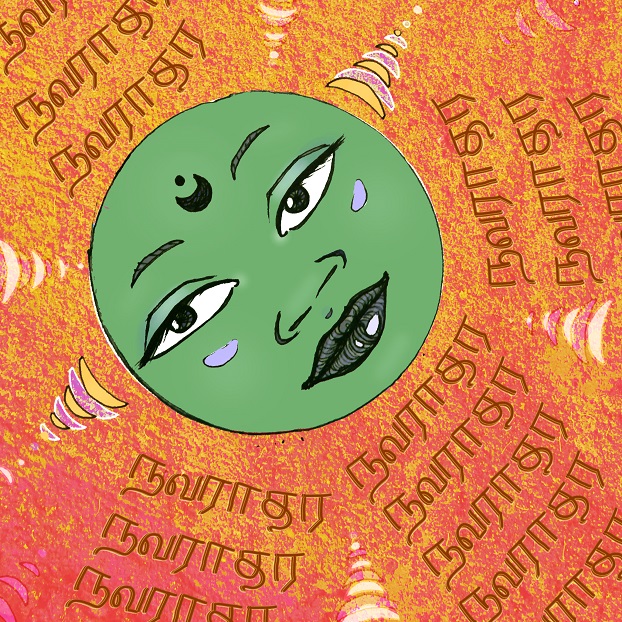
Dussehra, on the other hand, I haven’t really celebrated in the traditional way. I mean, it’s not feasible to set idols on fire where I stay. But this year my sister who is a professional Storyteller in Mumbai did something beautiful and inspiring for Dussehra. She and a group of kids built a Ravana idol out of cardboard boxes and craft materials. Each person colored their own paper cutout of Ravana and wrote one thing on the back that they want to release — whether that’s stress, anger, etc. And they mounted the little Ravana cutouts on the large idol and set the whole thing on fire!
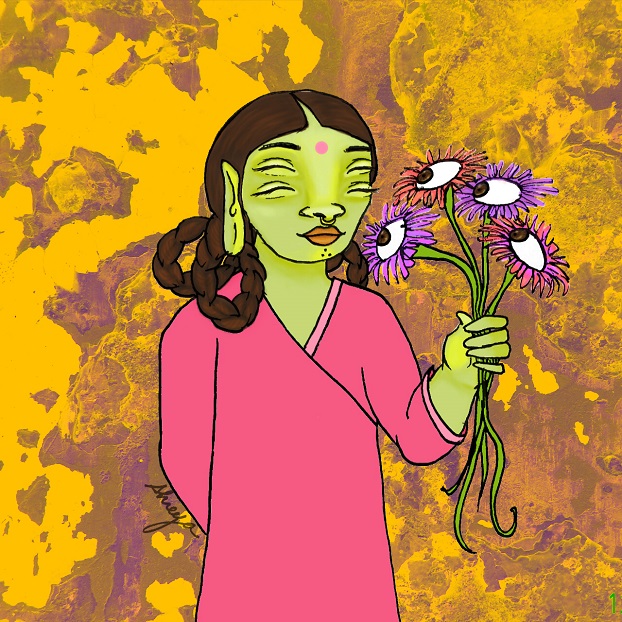
To me this is hella magic. It really shows how these symbolic esoteric rituals can yield a very positive and personal experience. It shows how the structure of old religious practices can serve as opportunity to reflect and connect. It shows how an age-old story can play a role in your personal transformation, if you choose it.
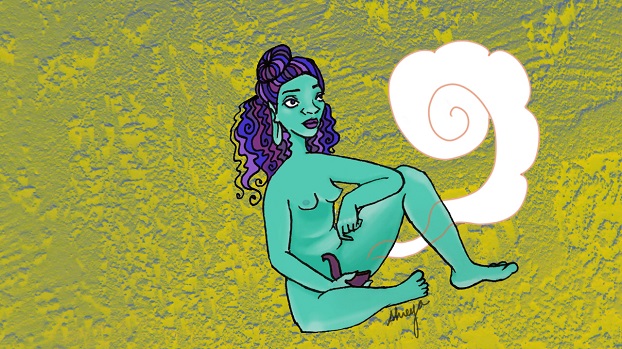
How do your digital-age Offerings continue traditions? In what ways do they expand upon or diverge from those traditions?
The social element of Navarathri is so valuable. The Golu is a space for us to be unapologetically beautiful, to come together and admire one another, to share our good wishes. It’s for women, by women. But there’s also the flip side — it’s very easy to get wrapped up in the spectacle and the glamour of Navarathri, and miss the forest for the trees. The forest, here, being the individual experience.

The Offerings, like a Golu, are for everyone’s consumption. Anyone can look at them, appreciate them. But only I really know what it took to create them. Only I know where I had to go, internally, to bring these pieces into being. Only I am privy to the personal experience… And I think that’s the nature of any encounter with the Divine. There’s an underlying fact that no one will ever fully comprehend your firsthand experience — that others will see only the flowers and not the roots, and that is okay. At the end of the day, the active process of making the Offerings counts more than the actual pieces made. Sitting in that flow-state for two hours a night, that’s enough. Offering yourself as a vessel for Spirit to move through is the most important Offering of all.
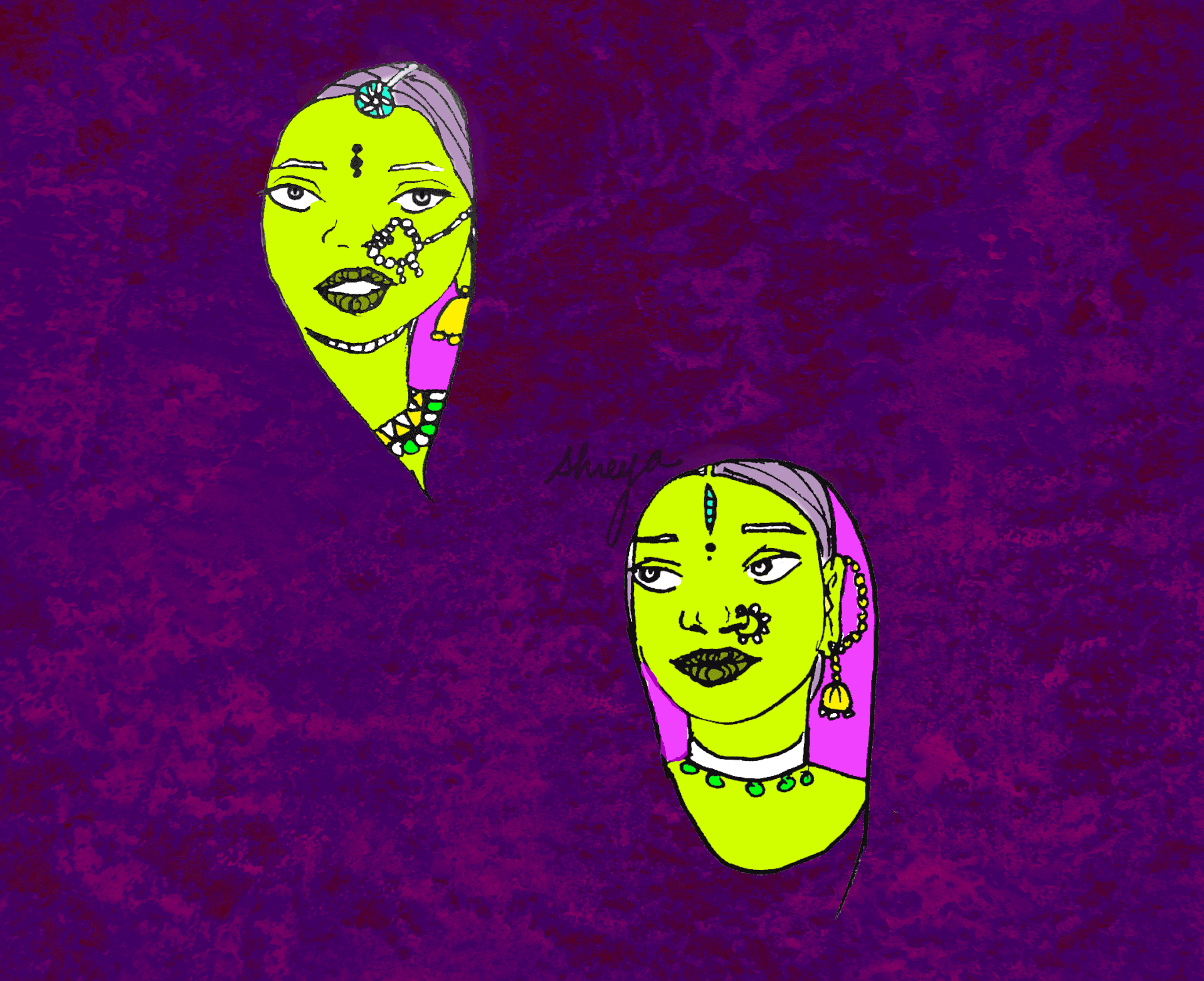
Navarathri is also such a special festival because it’s unequivocally femme. It’s an opportunity, in today’s patriarchal, casteist and nationalist presentation of Hinduism, to forge new Hinduisms that are explicitly inclusive. In the digital age and in the diaspora, it is essential to find healthy and accessible ways to dialogue with the Divine. For that reason I think the practice of using creativity as a means to connect with the Divine is not only beautiful, but practical and necessary. Next year I’d love to open the practice up to everyone across faiths; to invite friends in my community to create something every night for 9 nights, and view each others’ Virtual Golus. The idea is that creation begets creation.
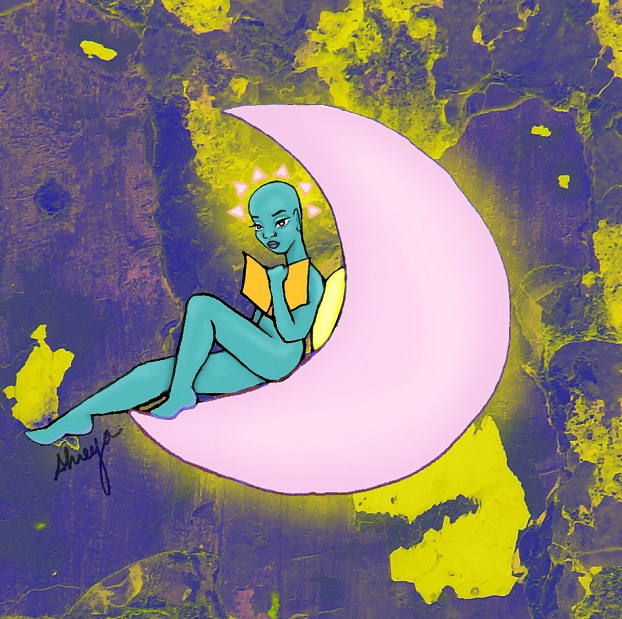
* * *
Pavani Yalamanchili is an editor at The Aerogram. Find her on Twitter at @_pavani, and follow The Aerogram at @theaerogram and on Facebook.












